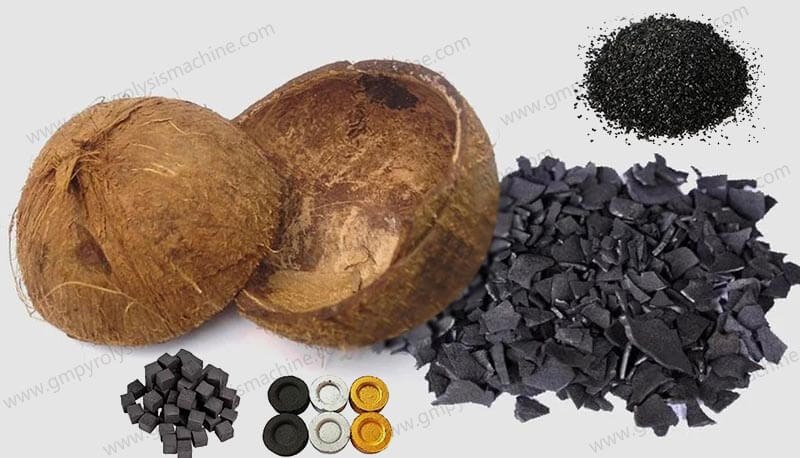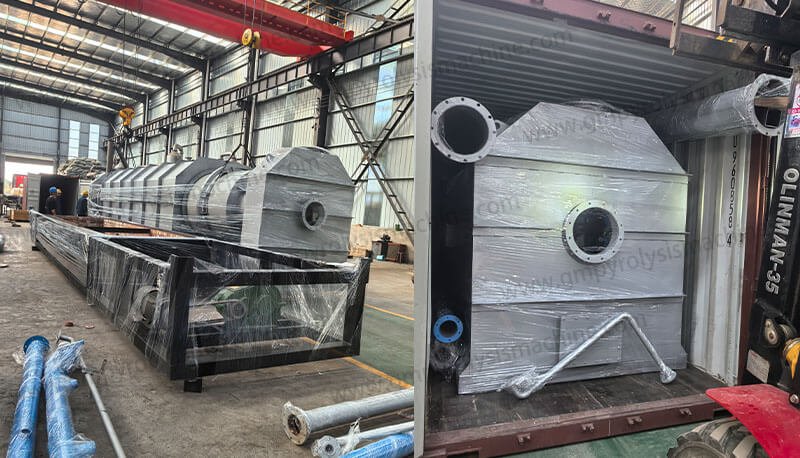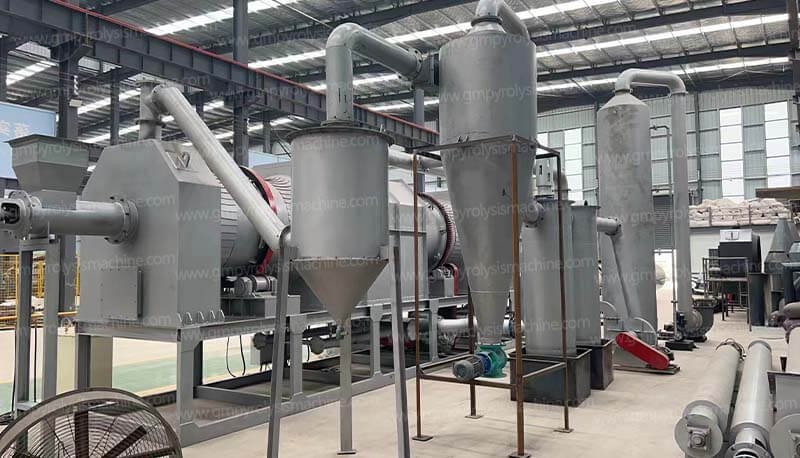Carbonization Coconut Shells Introduction
Coconut shells are more than just the outer layer of coconuts—they are an incredibly valuable resource, especially when it comes to carbonization. But what exactly is the carbonization coconut shells process?
What is Carbonization?
In simple terms, carbonization is the process of heating organic materials in the absence of oxygen to produce carbon-rich products. These products, such as charcoal, are widely used due to their high energy content and low environmental impact compared to other fuels.
The carbonization process involves heating the raw material, like coconut shells, to a high temperature (typically around 500-700°C) in a controlled environment. This heating breaks down the organic compounds and releases volatile gases, leaving behind carbon-rich charcoal. The lack of oxygen during heating prevents combustion, and the result is a product with a high concentration of carbon.
The Role of Coconut Shells in Carbonization
Coconut shells are an excellent raw material for carbonization. But why are they so commonly used in the first place?
High Carbon Content: Coconut shells have a naturally high carbon content, making them an ideal candidate for producing high-quality charcoal. The more carbon a material has, the better the fuel it becomes.
Durability: The shells are strong and dense, ensuring that the charcoal produced is durable and long-lasting.
Sustainability: As a byproduct of coconut farming, using coconut shells for carbonization helps reduce waste and provides a more sustainable alternative to using wood for charcoal production.
Step-by-Step Process of Carbonizing Coconut Shells
Now that we understand the basics of carbonization, let’s break down the process of carbonizing coconut shells into clear, manageable steps.
Step 1: Collection and Preparation of Coconut Shells
The first step in the carbonization process is the collection of coconut shells. Typically, these shells are gathered as byproducts of the coconut industry, so there is no additional resource depletion. After collection, the shells are cleaned to remove any residual coconut meat and other impurities.
Step 2: Drying the Coconut Shells
Next, the shells are dried to reduce moisture content. This is crucial because excess moisture can interfere with the carbonization process. The shells are usually air-dried or subjected to controlled drying methods until they reach an optimal moisture level, typically around 10-15%.
Step 3: Loading the Shells into the Carbonization Furnace
Once dried, the coconut shells are loaded into a carbonization furnace. This furnace is designed to control the heating process and ensure that the shells are subjected to the right temperature and oxygen levels.
Step 4: Heating and Oxygen Control
The shells are then heated to temperatures ranging from 500-700°C in the absence of oxygen. The lack of oxygen prevents combustion and allows the organic materials to break down into carbon. During this stage, volatile gases such as methane, carbon dioxide, and water vapor are released. These gases can often be captured and utilized for energy production.
Step 5: Cooling and Removal of Charcoal
After the heating process, the carbonized coconut shells (charcoal) need to cool down. This cooling phase is important because it stabilizes the charcoal and makes it safe to handle. Once cooled, the charcoal is removed from the furnace and is ready for use.
Factors Affecting the Carbonization Process
Several factors can influence the quality and efficiency of coconut shell carbonization:
Temperature Control: Maintaining an optimal temperature is crucial. Too low a temperature can result in incomplete carbonization, while excessive heat can damage the charcoal’s structure.
Time Duration: The longer the shells are carbonized, the higher the carbon content, but the process needs to be carefully timed to avoid over-carbonization.
Moisture Content: As mentioned earlier, the shells must be dried properly. High moisture content can cause inefficient burning and lower yield.
Particle Size of Coconut Shells: Smaller pieces of coconut shell carbonize more quickly than larger ones, which can affect the overall efficiency of the process.
Benefits of Carbonized Coconut Shell Charcoal
The carbonization of coconut shells yields charcoal with numerous benefits:
High Carbon Content: Coconut shell charcoal is known for its high carbon content, making it a powerful fuel source.
Environmental Impact: The process of carbonizing coconut shells is relatively eco-friendly compared to other methods of charcoal production, as it uses a renewable resource and produces less pollution.
Economic Benefits: Since coconut shells are readily available and often discarded, using them for carbonization can reduce waste and create valuable products that are in high demand.
Versatility: Carbonized coconut shells are used in a variety of applications, from cooking fuel to industrial processes, and even in water filtration systems.
Applications of Coconut Shell Charcoal
Coconut shell charcoal is a versatile product with many uses:
Activated Carbon Production: Coconut shell charcoal is a key ingredient in producing activated carbon, which is used in filtration, purification, and other industrial applications.
Fuel for Cooking and Heating: In many parts of the world, coconut shell charcoal is used as a clean and efficient cooking fuel.
Water Filtration: Due to its porous structure, coconut shell charcoal is commonly used in water purification systems to remove impurities and contaminants.
Soil Enhancement: Coconut shell charcoal is sometimes added to soil as a natural fertilizer that improves soil aeration and water retention.
The process of carbonizing coconut shells is both environmentally friendly and economically beneficial. From the production of high-quality charcoal to its use in various industries, coconut shell carbonization is a sustainable solution that adds value to what would otherwise be waste.
FAQs
1. What is the difference between carbonization and pyrolysis?
Carbonization is a specific type of pyrolysis that involves heating organic materials in the absence of oxygen to produce charcoal. While pyrolysis can involve a broader range of products, carbonization specifically focuses on creating carbon-rich substances.
2. Can coconut shells be carbonized using any furnace?
No, the furnace used for carbonizing coconut shells must be designed to control temperature and oxygen levels precisely to achieve optimal results.
3. How long does it take to carbonize coconut shells?
The carbonization process typically takes several hours, depending on the temperature, moisture content, and size of the coconut shells.
4. What are the environmental benefits of coconut shell charcoal?
Coconut shell charcoal is produced from a renewable resource, reduces waste, and typically has a lower environmental impact compared to other sources of charcoal.
5. Is coconut shell charcoal better than regular charcoal?
Yes, coconut shell charcoal is often preferred because it burns cleaner, produces less smoke, and has a higher carbon content compared to regular charcoal made from wood.






